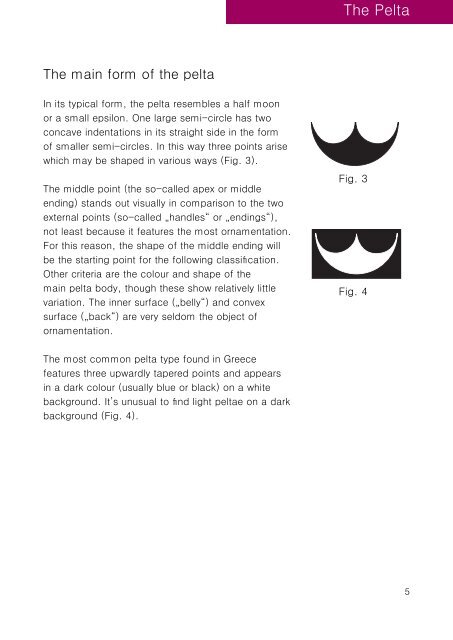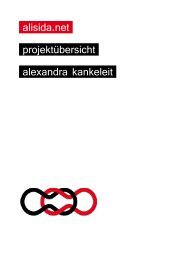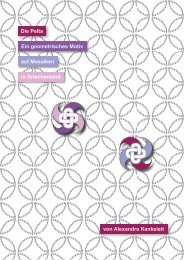The Pelta
A geometric motif on Roman mosaics in Greece
A geometric motif on Roman mosaics in Greece
Create successful ePaper yourself
Turn your PDF publications into a flip-book with our unique Google optimized e-Paper software.
<strong>The</strong> <strong>Pelta</strong><br />
<strong>The</strong> main form of the pelta<br />
In its typical form, the pelta resembles a half moon<br />
or a small epsilon. One large semi-circle has two<br />
concave indentations in its straight side in the form<br />
of smaller semi-circles. In this way three points arise<br />
which may be shaped in various ways (Fig. 3).<br />
<strong>The</strong> middle point (the so-called apex or middle<br />
ending) stands out visually in comparison to the two<br />
external points (so-called „handles“ or „endings“),<br />
not least because it features the most ornamentation.<br />
For this reason, the shape of the middle ending will<br />
be the starting point for the following classification.<br />
Other criteria are the colour and shape of the<br />
main pelta body, though these show relatively little<br />
variation. <strong>The</strong> inner surface („belly“) and convex<br />
surface („back“) are very seldom the object of<br />
ornamentation.<br />
Fig. 3<br />
Fig. 4<br />
<strong>The</strong> most common pelta type found in Greece<br />
features three upwardly tapered points and appears<br />
in a dark colour (usually blue or black) on a white<br />
background. It’s unusual to find light peltae on a dark<br />
background (Fig. 4).<br />
5






